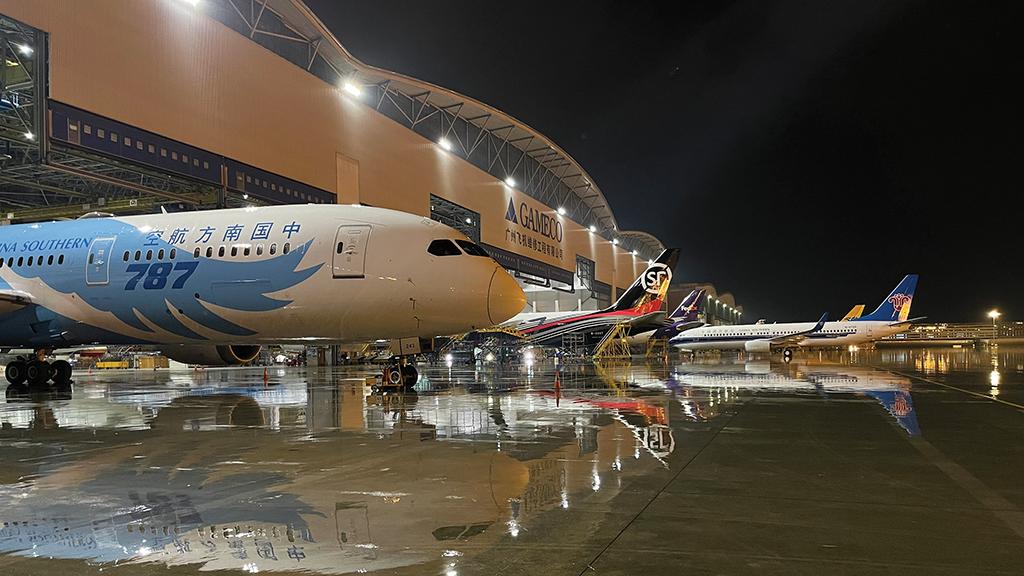
Gameco, AMECO and China Southern Technic recently signed a maintenance support cooperation agreement for aircraft components. The companies say this indicates a closer partnership among the MROs.
The world of air transport has moved from the terminology of pre-pandemic to post-pandemic. China’s new timeline began Jan. 8, 2023, the day its COVID-19 policies were relaxed and the country fully reopened.
The world’s second-largest aviation market is scrambling to restore capacity as traffic surges, and the MRO sector is set to benefit from renewed demand despite short-term challenges.
Joshua Ng, director at Alton Aviation Consultancy, tells Inside MRO that there has been no surge in demand as China reopens because most of its airlines, unlike some operators in other countries, continued maintenance and overhaul work during the depths of the pandemic, as the Chinese market remained fairly resilient in 2020 and 2021.
Labor shortages are challenging the aviation industry across the globe, but China appears to be less affected. Although 7,000 MRO personnel have left the industry there during the pandemic, 75% of them were not licensed engineers. According to the Civil Aviation Administration of China (CAAC), the country’s MRO sector nonetheless grew to 79,100 workers in 2022 from 74,400 in 2019. All of those factors have helped stabilize labor costs, Ng says.
“Chinese MRO players have also benefited from the overall lack of MRO capacity globally to return aircraft back into active service,” he notes. “Engine MROs in particular have been quite busy due to increased utilization of aircraft and strong demand from foreign clients. Now with the Boeing 737 MAX being recertified and flying again, the related MRO activities will ramp up as well.”
The CAAC’s special representative to the administrator’s office, Liu Fang, says h qualification of aviation personnel across all sectors remains a top safety priority, and efforts are in place to enhance their training, examination and qualification.
China will continue to see major MRO providers with strong brand recognition such as Gameco, AMECO and HAECO do well, but Ng says smaller companies will continue to deliver complementary services.
Sichuan Haite High-Tech, for example, has engaged with Elbe Flugzeugwerke (EFW) to attain capabilities on Airbus A321 passenger-to-freighter (P2F) conversion in Tianjin, China. It will be the first third-party conversion house for the A321P2F program, increasing the total A321P2F lines to four. Tianjin also is home to Airbus’ only final assembly line in Asia.
AMECO is collaborating with EFW, too, to provide conversion services for the A330P2F aircraft at its Chengdu facility. Both the Sichuan Haite High-Tech and AMECO sites expect to begin work on their first conversions this year.
Another collaboration is underway at the new airport in Ezhou between ST Engineering and SF Airlines. Their airframe MRO joint venture is another example of a “well-thought-out airport and aviation development strategy that attracted MRO players [to] new airport developments,” Ng says.
While three years of closure have strained China’s macroeconomy, the CAAC aims to return to 75% of pre-pandemic levels this year.
“Against the backdrop of a slowdown in the macroeconomic situation, there are some concerns that the growth trajectory will be slower, and break-even profitability will be achieved only in 2025,” Ng says. “Aviation activity levels drive MRO demand, and the Chinese MRO industry will be similarly affected.”
